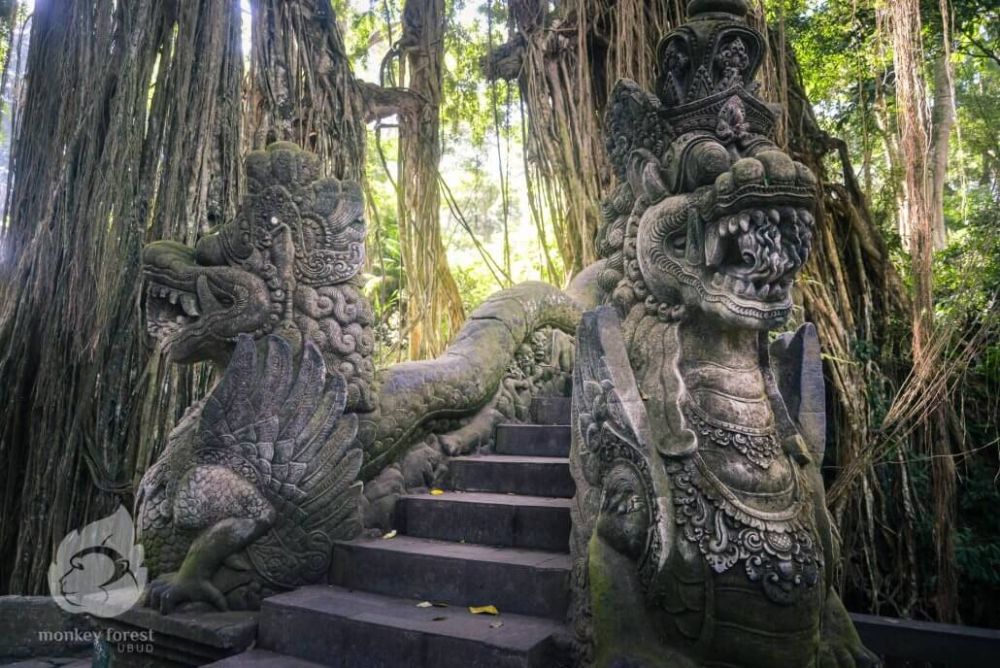

The Sacred Monkey Forest Sanctuary, also known as the Ubud Monkey Forest, is a nature reserve and Hindu temple complex in Ubud, Bali, Indonesia. Its official name is the Padangtegal Mandala Wisata Wenara Wana, reflecting its spiritual and philosophical significance in Balinese culture. The forest spans around 12.5 hectares and is home to over 700 grey long-tailed macaques. It is a prominent figure in the conservation of the region's natural resources, the preservation of spiritual values, and an essential destination in the Balinese tourism landscape.
Historically speaking, the Ubud Monkey Forest has always been an essential part of the local community due to its deep connection with the village's traditional and spiritual life. The development of tourism traced back to the 1970s when Bali emerged as an international travel destination. Ubud, with its rich culture and lush landscapes, became prominent for those seeking spiritual and cultural experiences.
Since then, the forest has seen a steady growth in the number of visitors. In the early years, the sanctity of the site was the primary draw for visitors. With the growth of tourism, there have been continuous efforts to maintain a balance between conservation efforts and visitor satisfaction. The local community manages the forest and uses the entrance fees for the conservation of the monkeys and the maintenance of the three holy temples within the grounds, which date back to the 14th century.
Today, Ubud's Monkey Forest is a must-visit destination for travelers to Bali. The latest tourism trends include:
The increased popularity has been a boon for local businesses but also poses challenges in terms of conservation and visitor management. The sanctuary continues to adapt, developing strategies to ensure that the sacredness of the forest and its inhabitants is preserved for future generations.
To visit the Sacred Monkey Forest Sanctuary, travelers should be aware of the following: